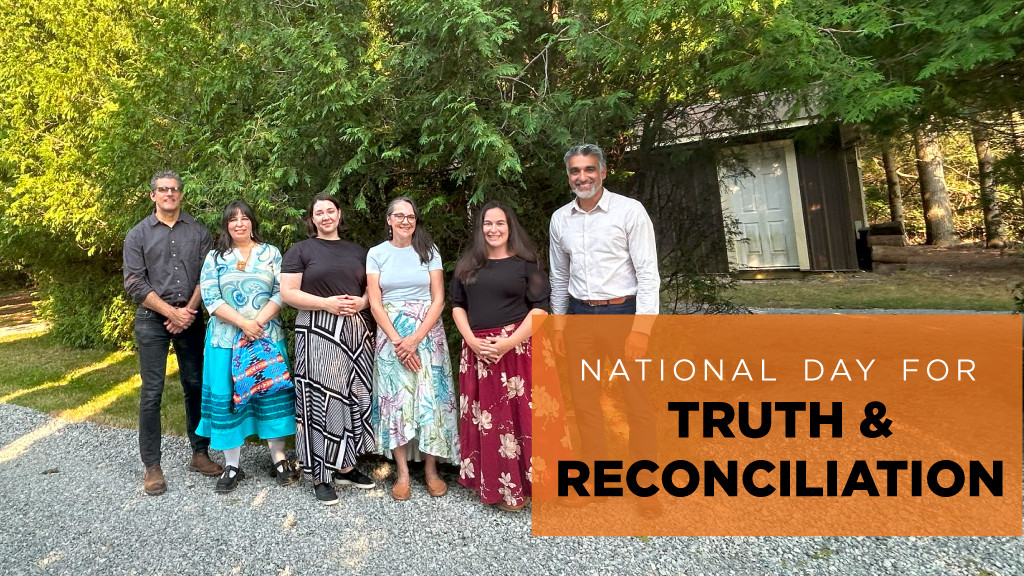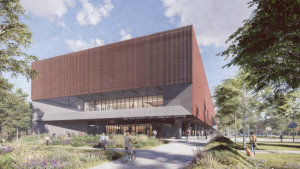A new non-profit called Amplify Indigenous Voices in Architecture (AIVIA) is looking to attract and support post-secondary Indigenous youth to succeed in the building and design profession.
The initiative, being led by Smoke Architecture, was officially launched earlier this month with a birthing ceremony.
“We’ve been contemplating doing this for a couple of years now,” said Eladia Smoke, principal architect.
“It’s going to be a charity. We wanted to start it in the proper way. Now we’re just working on refining our terms of reference.”
The idea was born in 2015 with the Royal Architectural Institute of Canada’s (RAIC) Indigenous Task Force.
“That entity is under the auspices of a non-Indigenous organization. We thought we need something for ourselves that we run, so that we can ensure and care for these knowledge systems in the way we need, so that they can grow and meet the needs of contemporary architecture,” Smoke explained.
Then, a few years ago, David Fortin, the first Indigenous director of a school of architecture in Canada, hosted a design lodge where he brought together Indigenous educators in architecture and practicing professionals.
“What actually emerged from that conversation was sort of a template for what needs to be done to attract and support Indigenous youth to succeed in the profession,” said Smoke “We talked about how Indigenous knowledge systems and architecture have not been well supported. Our elders have worked very hard to maintain and nurture those knowledge systems, but there is no entity that formally supports them to do that.
“Furthermore, Indigenous and non-Indigenous practitioners don’t have a go-to resource for Indigenous insights and perspectives into architectural design. This often falls to a very limited pool of Indigenous architects who are practicing to meet that demand. We thought, what if an entity were to fulfil all of these needs?”
Indigenous student experience inspires Smoke to start AIVIA
Smoke shared a story about an Indigenous post-secondary architecture summer student who influenced her decision to spearhead the initiative. She told Smoke she considered quitting in the first year of the program.
“(She said), ‘What I was learning didn’t seem applicable or relatable to me and my goals in bringing cultural awareness to this profession.’ The institutional environment, it was a culture shock for her,” she explained, adding Indigenous youth face cultural barriers that can be difficult to overcome at colleges and universities.
“She didn’t feel well supported in exploring Indigenous ways of thought, Indigenous ways of knowledge sharing, Indigenous ways of designing.”
She also didn’t see a place for herself in the profession, Smoke pointed out. Everything changed when she got the opportunity to build a canoe with William Commanda, a well-respected canoe builder.
“She said, ‘That just replenished my spirit. I got my gumption back and I wanted to keep going,’” Smoke recalled.
There are so few Indigenous-owned architecture firms today, but she is hoping to change that.
“I think it will benefit and enrich mainstream Canadian architectural narratives in a really profound and revolutionary way,” she said. “To do that we need Indigenous young people to join this profession and succeed on getting their training, entering the field and excelling.”
AIVIA will offer students access to a peer support network and professionals who have experience in the architectural profession.
Smoke said the team is planning to do a series of events that bring elders together with young people and architects in the field to undertake knowledge sharing using Indigenous methods.
“This might include things like canoe builds, birch bark basket making, wigwam builds, in-situ experimental architectural builds that are using our traditional methods,” she noted.
Initiative will offer multi-faceted supports
One of the initiatives they would like to get started on right away is an intro to Indigenous architecture course.
“The goal is to have it recognized as the core design course in the first year of study in each of the schools of architecture across the nation,” said Smoke. “It can be delivered during high school and it can be delivered remotely using input from practicing Indigenous architects and design professionals.”
She added, “The final assignment in this course is a portfolio of work that we build throughout the course assignments — a portfolio of their work that is suitable for submission as part of the admission requirements to the different schools of architecture.”
Smoke said she would also like to see a repository of research put in place.
“I’m already in talks with the University of Montreal,” she said. “Their director of the architecture faculty there…she and a number of other architectural academics have set up a research repository and they said they could have an adjunct space perhaps that serves as a go-to spot for Indigenous research in architecture. That’s a virtual space, but it could be curated by our board…so that it’s well cared for and that information is solid. We can rely on it. That’s the end game.”




Recent Comments